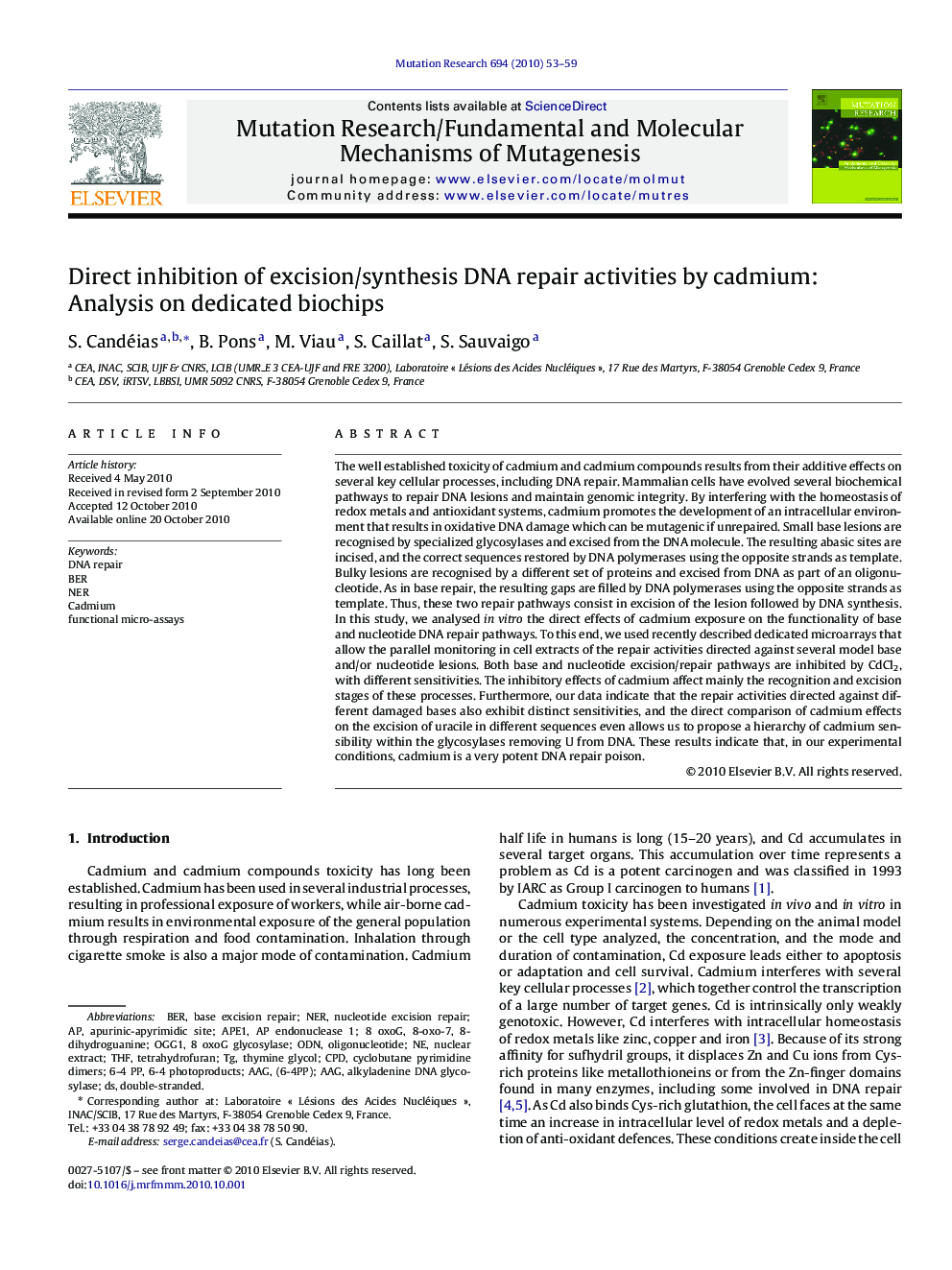| کد مقاله | کد نشریه | سال انتشار | مقاله انگلیسی | نسخه تمام متن |
|---|---|---|---|---|
| 2146660 | 1548368 | 2010 | 7 صفحه PDF | دانلود رایگان |

The well established toxicity of cadmium and cadmium compounds results from their additive effects on several key cellular processes, including DNA repair. Mammalian cells have evolved several biochemical pathways to repair DNA lesions and maintain genomic integrity. By interfering with the homeostasis of redox metals and antioxidant systems, cadmium promotes the development of an intracellular environment that results in oxidative DNA damage which can be mutagenic if unrepaired. Small base lesions are recognised by specialized glycosylases and excised from the DNA molecule. The resulting abasic sites are incised, and the correct sequences restored by DNA polymerases using the opposite strands as template. Bulky lesions are recognised by a different set of proteins and excised from DNA as part of an oligonucleotide. As in base repair, the resulting gaps are filled by DNA polymerases using the opposite strands as template. Thus, these two repair pathways consist in excision of the lesion followed by DNA synthesis. In this study, we analysed in vitro the direct effects of cadmium exposure on the functionality of base and nucleotide DNA repair pathways. To this end, we used recently described dedicated microarrays that allow the parallel monitoring in cell extracts of the repair activities directed against several model base and/or nucleotide lesions. Both base and nucleotide excision/repair pathways are inhibited by CdCl2, with different sensitivities. The inhibitory effects of cadmium affect mainly the recognition and excision stages of these processes. Furthermore, our data indicate that the repair activities directed against different damaged bases also exhibit distinct sensitivities, and the direct comparison of cadmium effects on the excision of uracile in different sequences even allows us to propose a hierarchy of cadmium sensibility within the glycosylases removing U from DNA. These results indicate that, in our experimental conditions, cadmium is a very potent DNA repair poison.
Journal: Mutation Research/Fundamental and Molecular Mechanisms of Mutagenesis - Volume 694, Issues 1–2, 10 December 2010, Pages 53–59